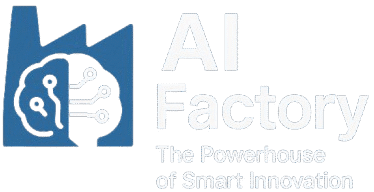Introduction: Is AI Safe in 2025?
Is AI safe? That’s the million-dollar question in 2025. As artificial intelligence continues to transform our world—from business automation to personalized healthcare—so do the concerns surrounding its ethics, safety, and societal impact.
We’ve reached a point where AI systems not only write emails and generate images but also make hiring decisions, diagnose diseases, and even influence elections. So, is AI helping or harming us? The answer lies somewhere in the gray zone, and that’s what this article is here to explore.
In this comprehensive guide, we’ll unpack the ongoing ethical debates about artificial intelligence, its safety risks, societal implications, and what industry experts, researchers, and lawmakers are doing to keep AI under control. If you’re curious about whether you can trust AI or fear it—read on.
Background: A Brief History of AI Safety Concerns
Artificial Intelligence isn’t new. The idea dates back to the 1950s when Alan Turing posed the question, “Can machines think?” Fast forward to 2025, and machines are not only thinking—they’re learning, adapting, and making decisions faster than most humans.
Early AI systems were simple. Today’s AI models like OpenAI’s GPT-4.5 or Google’s Gemini are capable of sophisticated tasks. But with great power comes great responsibility—and risk. Concerns started to grow as AI systems began:
- Replacing human jobs
- Making biased decisions
- Becoming “black boxes” (unexplainable even to their creators)
- Being used for surveillance, deepfakes, and misinformation
That’s where the AI safety debate begins—and it’s no longer just a philosophical issue. It’s a practical one with real-world consequences.
AI Safety in 2025: What’s Different?
What’s new in 2025? AI systems are now fully integrated into:
- Finance: Algorithmic trading, fraud detection, loan approvals
- Healthcare: AI diagnostics, robotic surgeries, patient chatbots
- Law Enforcement: Facial recognition, predictive policing
- Education: Automated tutoring, essay grading, student monitoring
- Entertainment: AI-generated music, movies, games, and scripts
These powerful tools are creating opportunities, but also intensifying ethical concerns.
Key Issues Under Debate
| Issue | Supporters Say | Critics Argue |
|---|---|---|
| Job Automation | Boosts productivity, reduces costs | Eliminates millions of jobs, increases inequality |
| Bias and Discrimination | AI can be trained to be fair | Bias is often baked into training data |
| Autonomy and Control | AI follows programmed instructions | Some AI behaviors are unpredictable |
| Data Privacy | AI can secure data and detect leaks | AI also enables mass surveillance |
| Weaponization | Could protect borders and lives | Leads to autonomous killer drones |
Key Features and Safety Mechanisms in Modern AI
Modern AI systems aren’t free-for-alls. Developers are embedding safety mechanisms to reduce risks. Let’s explore a few.
1. Alignment Algorithms
These are built to ensure AI goals align with human values. For example, reinforcement learning from human feedback (RLHF) is used to “teach” AI what’s appropriate.
2. Explainability (XAI)
Explainable AI tries to make decision-making transparent. This helps build trust and detect problems early.
3. Guardrails and Filters
Content moderation systems are integrated into large models like ChatGPT to prevent harmful or toxic outputs.
4. AI Ethics Boards
Companies like Microsoft, Google, and Meta now have internal ethics teams that audit AI models for safety and fairness.
5. Regulations and Compliance
Governments are stepping in. The EU AI Act (passed in 2024) sets strict compliance requirements for high-risk AI.
Pros and Cons of AI in 2025
| Pros | Cons |
|---|---|
| Increases efficiency in every sector | Threatens traditional employment |
| Can reduce human error (e.g., in healthcare) | May still make unpredictable mistakes |
| Personalizes user experience | Requires massive data collection |
| Enables faster scientific discovery | Could be misused (bioweapon research, etc.) |
| Improves safety in manufacturing and transport | Liability unclear when accidents happen |
Who Should Use AI—And With What Caution?
AI isn’t just for tech giants. In 2025, AI tools are accessible to:
- Small businesses using chatbots and CRMs
- Doctors and hospitals for diagnostics
- Educators for student assessment
- Marketers for content generation
- Journalists for summarizing news
- Startups for coding assistants and idea generation
However, each user must:
- Understand limitations of the AI they use
- Never fully automate critical decisions without oversight
- Use diverse data to reduce biases
- Follow legal frameworks and ethical codes
FAQs About AI Safety in 2025
1. Is AI safe to use in daily life?
Yes, but with caution. Most consumer-grade AI tools include safeguards. Always read privacy policies and avoid sharing sensitive information.
2. Can AI be biased?
Absolutely. AI reflects the data it’s trained on. If that data includes bias, the AI likely will too.
3. Who is responsible when AI makes a mistake?
It depends. In general, the developers or organizations deploying the AI are held accountable. Some legal frameworks now require a “human in the loop.”
4. Are there laws regulating AI in 2025?
Yes. The EU AI Act, the U.S. AI Bill of Rights, and other regional laws now require transparency, fairness, and safety testing for AI.
5. Can AI become sentient or conscious?
Not yet—and likely not in the near future. Most AI today mimics intelligence but lacks true understanding or awareness.
Conclusion: Should We Fear or Embrace AI?
AI in 2025 is both a marvel and a minefield. It’s making life easier in countless ways, but it’s also raising serious ethical and existential questions. The debate around AI safety is not just about technology—it’s about how we define intelligence, autonomy, and responsibility in a digital age.
The right question isn’t just “Is AI safe?”, but rather “How can we ensure AI remains safe as it grows smarter?” That requires collaboration—between engineers, lawmakers, ethicists, and users like you.
Final Verdict: Proceed with Cautious Optimism
AI isn’t inherently good or bad—it’s a tool. Just like fire can warm your home or burn it down, AI can empower or endanger. The key lies in how we build, regulate, and use it.
In 2025, the safest approach to AI is one of cautious optimism. Embrace its benefits, but stay informed. Ask questions. Demand transparency. And always keep a human in the loop.
✅ Final Takeaway: AI can be safe—if we make it so. Let’s use it wisely.

